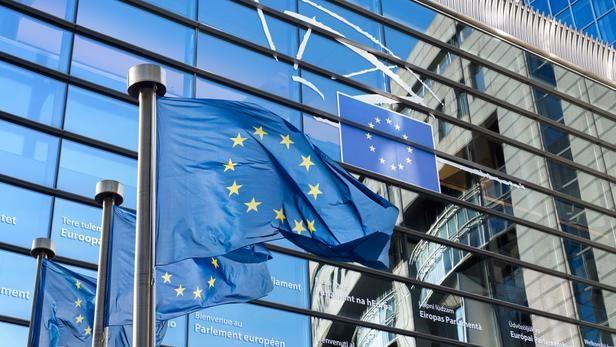Maxence Cordiez is an engineer in the energy sector.
On July 8, the European Commission presented its strategic roadmap for the deployment of the di-hydrogen molecule (abbreviated "hydrogen"). This molecule should be brought to play a role in the fight against climate change, by replacing fossil fuels in applications that are difficult to electrify, such as industry or heavy mobility. It can also serve as a precursor for the synthesis of hydrocarbons, by reaction with CO2 of non-fossil origin.
Almost all of the hydrogen produced today is produced from fossil resources.However, for reasons of cost, almost all of the hydrogen produced today is produced from fossil resources (steam reforming of methane and gasification of coal, in particular). The promotion of this energy vector must therefore be accompanied by the decarbonization of its synthesis, by producing it by electrolysis of water with low-carbon electricity. The European Commission is even more restrictive since the only objectives they define concern hydrogen produced from “renewable” electricity. However, there is a flaw in this objective which will in practice allow hydrogen produced from any electricity to be labeled as “renewable”.
The magic of certificates guaranteeing the origin of electricity
When you take out a “green” electricity contract (100% renewable), have you ever wondered how you can continue to have electricity on windless nights (when the photovoltaic panels and wind turbines are not producing)? It's simple: whatever your contract, electricity is supplied by the country's electricity mix. So on windless nights, electricity will be of nuclear, hydraulic and fossil origin. What "green" contracts guarantee is that your electricity supplier has certificates in its portfolio ensuring the production of a volume of renewable electricity at least equivalent to that sold through these contracts. These certificates are valid for one year and exchangeable on the markets.
The customer of a “green” contract can consume when he wants, even in the absence of wind and sun.Let's take an example. A French customer who takes out such a contract can see the electricity he consumes on a windless night in December guaranteed to be renewable because his supplier has purchased a certificate of origin attesting that an equivalent quantity of renewable electricity has been produced. by photovoltaic panels in Greece one midday of the previous August.
This mechanism is misleading because it gives the false impression that wind and solar intermittence is not a problem: the customer of a “green” contract can consume when he wants, even in the absence of wind and sun. The electricity consumed will then be mainly nuclear, fossil or hydraulic (depending on the country) but labeled “renewable” because renewable capacities will have produced at least as much electricity, somewhere in Europe, when they can.
Consequences for the production of hydrogen
Thanks to this voluntary flaw in the mechanism of guarantees of origin, the European Commission plans to produce "renewable" hydrogen with high load factors (rate of use at full power of the electrolysers), which would not be possible. if hydrogen synthesis were to follow solar and wind power generation. The target set for 2024 of producing 1 million tonnes of hydrogen (MtH2) with 6 GW of electrolysers would therefore assume a load factor of nearly 100% and the 2030 target of 10 MtH2 with 40 GW of electrolysers. would bring it to nearly 140%. A value which, by the way, is impossible to achieve, a load factor that cannot exceed 100% ...
It will suffice for Poland to purchase renewable electricity production certificates to benefit from the low cost of its coal-fired electricity.Because of this flaw, a country like Poland where the cost of electricity is low thanks to coal (80% of its mix) will be at an advantage. It will only have to buy renewable electricity production certificates elsewhere in Europe to benefit from the low cost of its coal-fired electricity and, thanks to it, to produce hydrogen labeled “renewable”.
This approach presents many problems. It will add a constant to current electricity consumption, even in times of high demand, without at the same time promoting the deployment of the generating capacities available on demand that would be necessary to meet it. It will also lead to overestimating initially the competitiveness - and therefore the potential - of “renewable” hydrogen. By producing it with high load factors, the fixed costs of the electrolysers will be spread over a large production. At the end of the transition when we will no longer burn fossil fuels, the electrolysers will have to follow the variations of the wind and the sun, especially in countries with little or no nuclear power plants and hydroelectric installations. The decrease in the load factor of the electrolysers will lead to an increase in the price of hydrogen at the same time as a decrease in the volumes produced.
Read also: "Closing nuclear power plants will increase fossil fuel emissions"
So that the mechanism of guarantees of origin of electricity is sincere, the electricity consumed at a given moment should be guaranteed by a certificate issued at the same time (at half-hourly time steps). Basically, this dysfunctional mechanism exists because the problem of energy transition has been taken the wrong way. By deciding that renewable energies - rather than low-carbon energies in general - should be the solution to replace fossil fuels, mechanisms were put in place to mask its limitations. Since these mechanisms do not meet these limits, they will only function as long as fossil, nuclear and hydraulic capacities allow them to be concealed.






